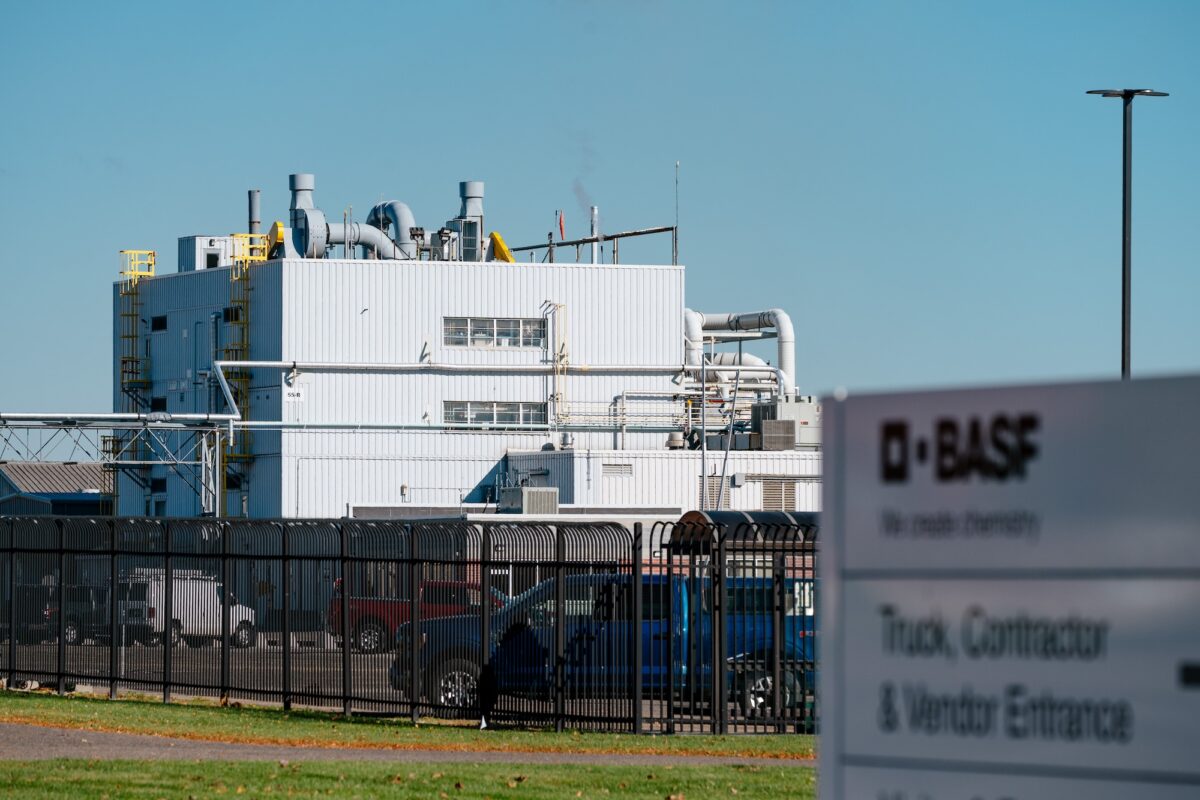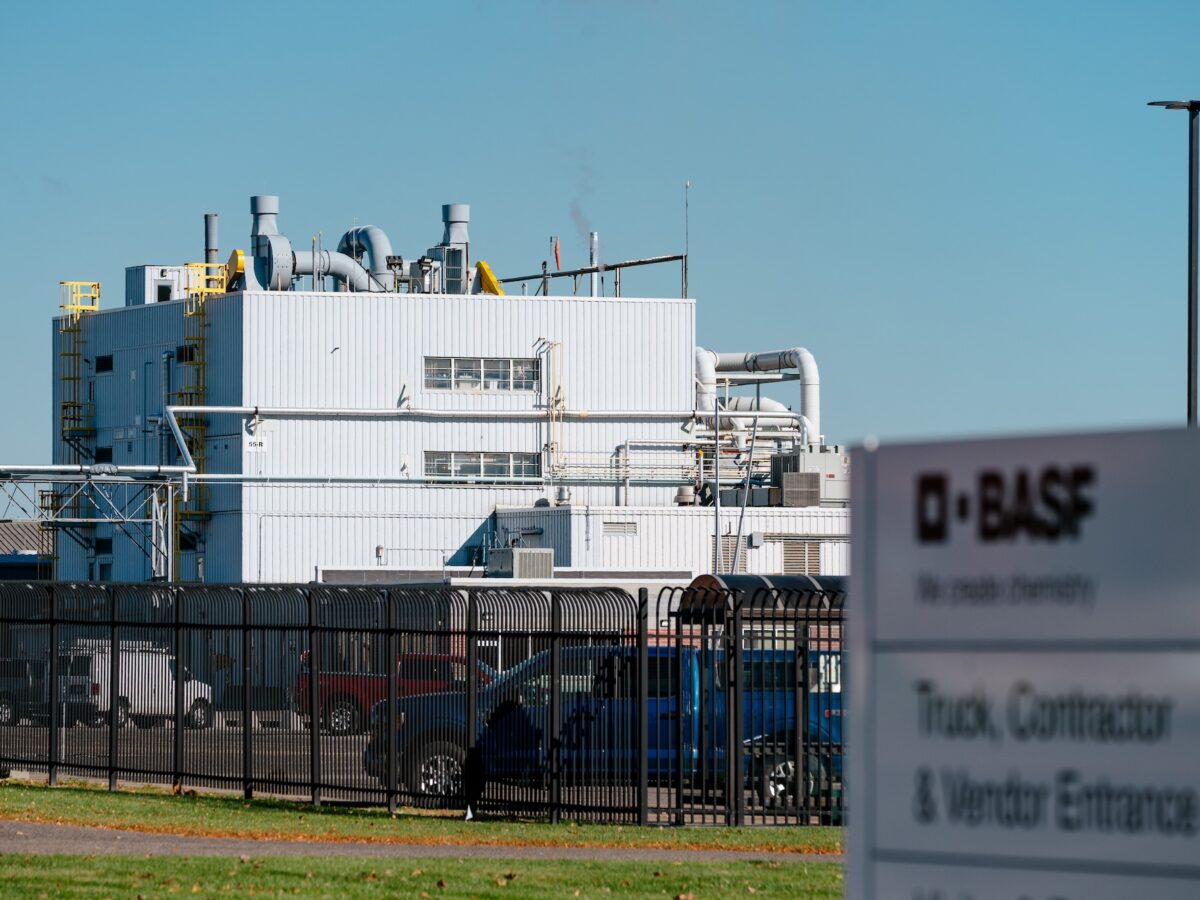Overview:
-Up to 60 gallons of contaminated groundwater flow from BASF's Wyandotte site into the Detroit River every minute.
-EPA says complex soil and infrastructure challenges are barriers to an immediate fix.
-EPA and Michigan officials discuss plans for a final remedy involving perimeter barriers and groundwater collection.
Federal and state regulators held an online information session Wednesday to discuss plans to rein in pollution from BASF‘s Wyandotte facility, which has been sending up to 60 gallons of polluted groundwater into the Detroit River each minute.
Contamination at the BASF chemical plant contains toxic PFAS chemicals, arsenic, benzene, and other chemicals. The site is roughly 1,700 feet from Wyandotte’s municipal drinking water intake.
Environmental Protection Agency officials discussed plans to focus on both interim monitoring of contamination and a final remedy for the pollution involving perimeter barriers, groundwater collection, and extraction. Construction on this final remedy for addressing pollution is scheduled to begin in 2027.
A consent agreement between the state and BASF to manage toxic PFAS pollution from an outfall at the north end of the site was announced by Melinda Steffler of the Michigan Department of Environment, Great Lakes, and Energy’s Water Resources Division. This agreement would bring levels of PFOS, one of the most dangerous types of the so-called “forever chemicals,” into compliance with the 11-parts-per-trillion water quality standard by Sept. 30, 2028.
EGLE and EPA representatives didn’t answer questions during Wednesday’s presentation asking whether regulators would take stronger action in the short term to lower pollution, like requiring BASF to pump and treat more contaminated groundwater.
“Is it accurate, as our expert has told us, that a mobile pump and treat unit could be brought to the site and achieve a reversed gradient in a short time, a month or so? If so, why is this not being required until the full system can be put in place?” Carrie Le Seur, legal director for the nonprofit For Love of Water, asked via Zoom chat on Wednesday.
An EPA spokesperson told Planet Detroit Thursday there are challenges to managing pollution by increasing pumping or putting mobile treatment in place.
“Due to the complexity of the soil layers, existing utility infrastructure beneath the property, and the extent of contamination across the property, the most effective remedy is one that mitigates groundwater discharge from the entire border of the BASF property along the Detroit River,” the spokesperson said.
Environmental advocates have previously stressed the need for stronger short-term action at the BASF site. EGLE spokesperson Josef Greenberg previously told Planet Detroit that data from 2019 to 2023 showed BASF was pumping out groundwater at a rate of around 1 gallon per minute, or less than 2% of the contamination estimated to be migrating into the Detroit River.
In a March 10 letter, EGLE asked BASF how it planned to manage contaminated groundwater, including potential modifications to existing control measures, giving the company until May 10 to respond.
The letter says a 1986 consent decree requires “the number of wells and rate of withdrawal from each location be at all times sufficient to halt the flow of contaminated groundwater to the Detroit River and the City of Wyandotte sewer system …”
MORE REPORTING ON THE BASF POLLUTION
Michigan regulators request BASF’s plan to halt Detroit River pollution: Letter
Michigan regulators give BASF 60 days to produce a plan to stop contaminated groundwater from its Wyandotte chemical plant from polluting the Detroit River.
Regulators have authority to stop BASF from polluting the Detroit River within months, experts say
Environmental groups oppose using taxpayer money to safeguard Wyandotte’s water without more action from polluter BASF.
BASF pollution: Environmental groups secure public health assessment for Wyandotte
State and federal authorities will assess the impacts of BASF’s ongoing pollution on air, water and soil.
Environmental experts say faster action, design changes needed
Brian O’Mara, a geological engineer and environmental remediation consultant, said in February that a temporary solution could be enacted in 60 to 90 days if regulators order the company to install additional wells, trenches, and pumps to prevent runoff from entering the river.
O’Mara expressed concerns about BASF’s plans for a physical barrier at the site, saying it could still allow contaminated groundwater to enter the river and that more pumping was needed to create an inward hydraulic gradient to keep water from running off the property.
Scott Troia, staff attorney at the Great Lakes Environmental Law Center, asked on the Wednesday call why the EPA wasn’t requiring a 1-foot inward gradient as opposed to the 0.5-foot gradient proposed in BASF’s 60% design for addressing contamination at the site. (The 60% design refers to the second step of the 30%/60%/90% process for developing plans for major construction projects.)
Troia said a seiche event, or period of strong wind that pushes water from one end of Lake Erie to the other and pulls water out of the Detroit River, could draw groundwater to the river if only a 0.5-foot gradient is required.
The EPA spokesperson said that an interim measure to install barriers around the perimeter of the site combined with a groundwater collection trench mean the 0.5 foot gradient will effectively stop contaminated groundwater from leaving the site.
Wednesday’s information session followed a November complaint submitted by EGLE employee Art Ostaszewski to Michigan Attorney General Dana Nessel’s office that alleged state regulators failed to stop criminal water quality violations over several decades.
The attorney general’s office said in a March 31 letter that it’s not seeking criminal charges, stating there’s “been on-going administrative/civil efforts back and forth to remediate any environmental issues in this matter. Thankfully, no recent testing has shown any danger to the water intake for the city of Wyandotte.”




